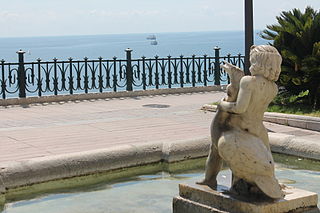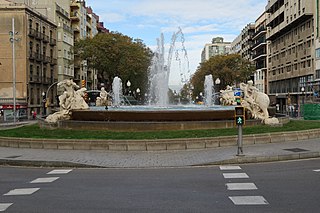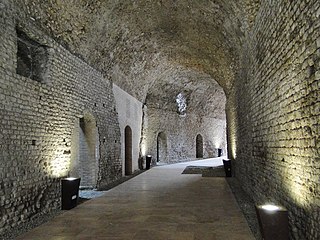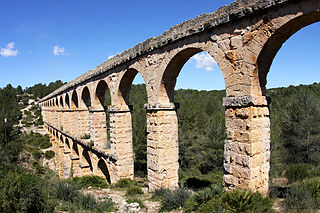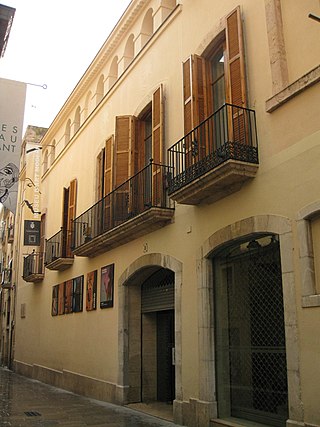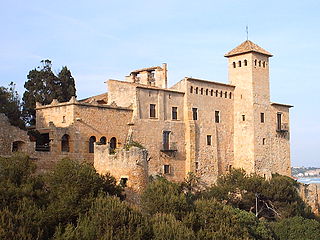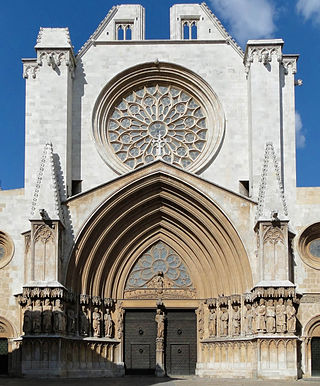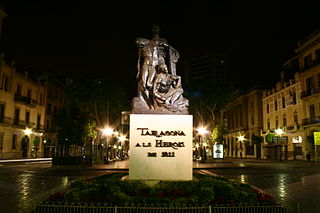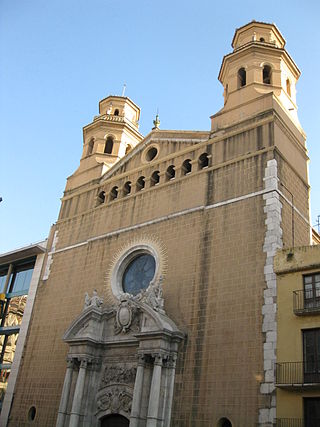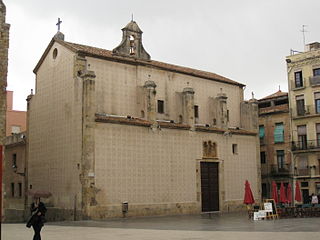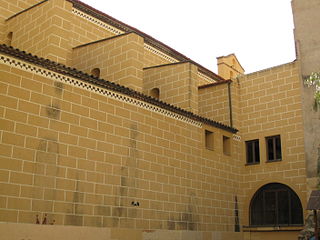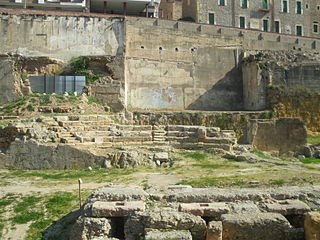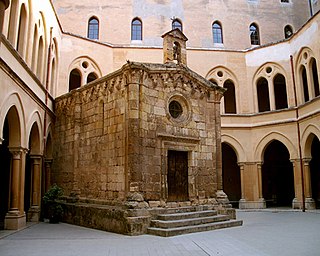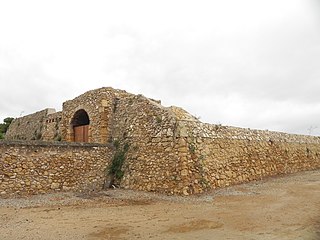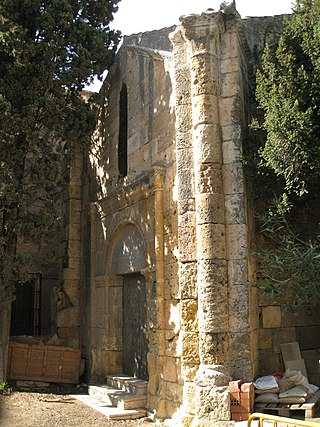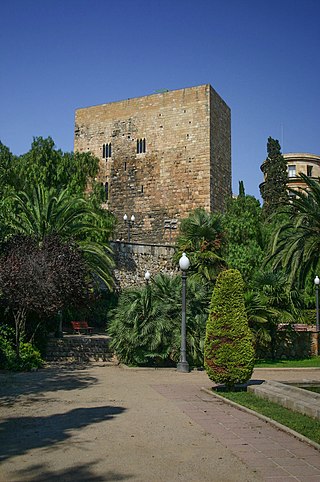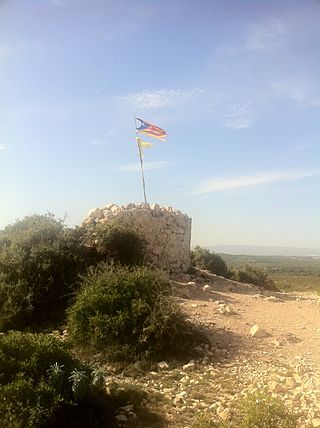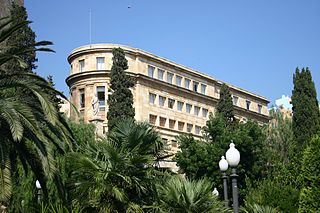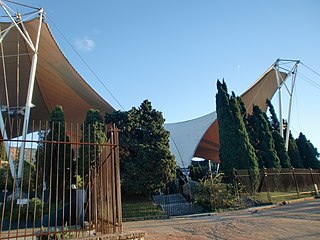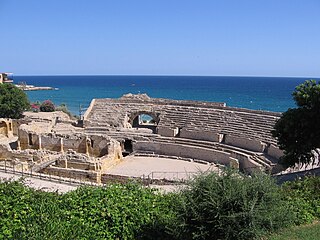22 Sights in Tarragona, Spain (with Map and Images)
Legend
Premium Sights
Book tickets, guided tours and activities in Tarragona.
Guided Free Walking Tours
Book free guided walking tours in Tarragona.
Welcome to your journey through the most beautiful sights in Tarragona, Spain! Whether you want to discover the city's historical treasures or experience its modern highlights, you'll find everything your heart desires here. Be inspired by our selection and plan your unforgettable adventure in Tarragona. Dive into the diversity of this fascinating city and discover everything it has to offer.
Sightseeing Tours in TarragonaActivities in TarragonaThe Balcó del Mediterrani is a 23 m cliff at the seaside end of the Rambla Nova in Tarragona, protected by a beautiful iron railing. In front of it is the monument to the Catalan navigator Roger de Llúria. From the balcony there is a magnificent view of the sea, the port, the train station, the Amphitheatre, the beach and the Punta del Miracle, and a part of the city. The people of Tarragona, when they walk along the Rambla, say that they are going "to touch iron" on the Balcony.
The Centenary Fountain is located in Tarragona, in the middle of the Rambla Nova. It was inaugurated in 1954 and is the work of the sculptor Josep Viladomat i Massana. It is currently located at the intersection between Ramón y Cajal Avenue and Pau Casals, Rovira i Virgili and Cristòfor Colom streets, where it acts as a roundabout and orders traffic. It is made of stone from Hontoria (Burgos) and consists of four independent sculptural elements formed by the figure of a man and an animal gushing water from its mouth, both surrounded by details in the form of vegetation.
The circus of Tarraco was located within the city's pomerium, taking advantage of land that, since its foundation, had been owned by the state. Located in the upper part of Tarragona, parallel to the Rambla Vella, and in some parts, it maintains an exceptional state of conservation. It is the building where the horse races were held, as well as the beam and chariot races with a capacity for 20,000 people, where the carriage races were held. It was built during the rule of Emperor Domitian and was in operation until the fifth century AD.
The Ferreres Aqueduct, also known as the Pont del Diable, is an ancient bridge, part of one of the Roman aqueducts that supplied water to the ancient city of Tarraco, today Tarragona in Catalonia, Spain. The bridge is located 4 km north of the city and is part of the Archaeological Ensemble of Tarraco.
5. Museu d'Art Modern
The Museum of Modern Art of Tarragona (MAMT) is located in Casa Martí, at Carrer de Santa Anna, 8. It was created in 1976 by the Tarragona Provincial Council with the aim of promoting the study and knowledge of modern and contemporary art and, at the same time, to conserve and display its artistic heritage and share it with the public. It has an auxiliary library, a documentation centre and a photographic archive. The most important work in the museum is the Tapestry of Tarragona, by Joan Miró. It is a large project that Miró created together with Josep Royo. The painter gave this work to the Red Cross Hospital in 1970 to thank Dr. Rafael Orozco for the care he offered to his daughter. When the hospital closed, he gave the tapestry to the Museum of Modern Art.
6. Castell de Tamarit
Tamarit Castle is located on a promontory on the shores of the Mediterranean Sea, between Tamarit beach and Cala Jovera, in the municipality of Tarragona. Its walls surround the walled town of Tamarit, which blends in with the architecture of the castle itself. The complex of walled town and castle mixes Romanesque, Gothic and Renaissance styles, and the interventions carried out from 1916 onwards by its new owner Charles Deering, advised by his friend the painter Ramon Casas, contributed to standardising the different buildings. It is currently owned by the real estate company Betren, which rents it out to hold private events such as concerts or weddings.
7. Catedral de Tarragona
The Primatial Cathedral of Tarragona is a Roman Catholic church in Tarragona, Catalonia, Spain. The edifice is located in a site previously occupied by a Roman temple dating to the time of Tiberius, a Visigothic cathedral, and a Moorish mosque. It was declared a national monument in 1905.
8. Monument als Herois de 1811
The Monument to the Heroes of 1811, popularly known as The Striped, is a work in Tarragona by Antonio Julio Rodríguez Hernández, known as Julio Antonio. It is located on a stone podium with three bronze sculptures in the Plaza de Julio Antonio, at the intersection of the Rambla Nova in Tarragona with the streets of Ixart and Cañellas.
9. Castell de Ferran
Ferran Castle is a castle in the municipality of Tarragona, in the district of Ferran, between Tamarit and Altafulla. Its origin dates back to the eleventh century, when it was only a watchtower within the boundaries of the castle of Tamarit. This tower has been documented since 1197 as a result of a testamentary donation in which William of Granada left the castle of Ferdinand to his nephew Berenguer de Castellet.
10. Església de Sant Agustí
The Church of Sant Agustí is a church in the municipality of Tarragona protected as a cultural asset of local interest. From the old convent of Sant Agustí, which previously belonged to the Jesuits of Tarragona. However, over the centuries only the artistic value linked to works of ancient Roman art remains, together with certain characteristic features of the Escola del Camp.
11. Natzaret
The Church of Nazareth is a church in the old town of Tarragona, protected as a cultural asset of local interest. Although nothing remains of the primitive building of the thirteenth century, the sixteenth-century temple and the successive restorations allow us to understand the dynamics of constructions in the city of Tarragona.
12. Casa Castellarnau
Casa Castellarnau is a manor house in the city of Tarragona protected as a cultural asset of local interest. It is currently the headquarters of the Tarragona History Museum. The building was built inside what in Roman times was the administration square of the Provincial Forum. Excavations carried out in 1993 in the courtyard uncovered a whole series of structures from the Roman period corresponding to the podium of the portico of the great square representing the province.
13. Església de Sant Miquel del Pla
Sant Miquel del Pla is a church in the municipality of Tarragona, the current sub-headquarters of the Royal Brotherhood of Jesus Nazarene, protected as a cultural asset of local interest. The construction that can be seen today corresponds to the eighteenth century (1734) with a classicist baroque style, but its origin is located in the twelfth century.
14. Teatre Romà
The Roman Theatre of Tarraco is a Roman theatre in the Roman colonia of Tarraco –present-day Tarragona, Spain–, capital of the Roman province of Hispania Tarraconensis. Built at the end of the 1st century BC, in the time of Augustus, in the area of the local forum and the port, it was used for Roman theatrical performances.
15. Sant Pau del Seminari
Sant Pau del Seminari is a chapel in the municipality of Tarragona protected as a cultural asset of local interest. It is one of the oldest and best preserved testimonies of Tarragona's Romanesque. The chapel is mentioned in a document from the early thirteenth century. Linked to Santa Tecla la Vella and with decorative details of the cloister enclosure.
16. Fortí de la Reina
The Fortí de la Reina is an eighteenth-century military construction built on the occasion of the War of the Spanish Succession, strategically located at the tip of the Miracle of Tarragona, controlling the coastline. It has been declared a Cultural Asset of National Interest.
17. Santa Tecla la Vella
Santa Tecla la Vella is a chapel in the municipality of Tarragona protected as a cultural asset of local interest. Located in what is now the garden of the old cathedral pit, it is a construction that reuses materials from an older work that some scholars have linked to the old cathedral. The data that emerge from a correct interpretation of the building should help to find out one of the repeated questions of the medieval study of Tarragona: the building of the cathedral and the canonical dependencies.
18. Torre del Pretori
The provincial forum of Tarraco is a Roman archaeological site in Tarragona, Catalonia, Spain, encompassing an area of 18 ha. Together with other Roman remains in the city it makes the Archaeological Ensemble of Tarraco, which was listed in the UNESCO World Heritage Sites in 2000.
19. Sant Simplici
Sant Simplici is a mountain of 111 meters that is located in the municipality of Tarragona, in the Catalan region of Tarragonès. Near the summit we can find a geodesic vertex. This summit is included in the list of the 100 peaks of the FEEC.
20. Museu Arqueològic de Tarragona
The National Archaeological Museum of Tarragona is a public museum located in the city of Tarragona focusing on its rich historical heritage and ancient remains. It includes archaeological findings of Tarraco's Roman and Early Christian past, as well as a library. The museum's origins lay in the 19th century, making it the oldest of its kind in Catalonia, with some collections assembling objects found from the 16th century onwards, but with most discoveries having taken place in the last 150 years.
21. Teatre Auditori Camp de Mart
The Teatre Auditori del Camp de Mart is an open-air theatre, covered with a candle, inspired by the examples of classical Greek theatres. It has a grandstand in the form of an amphitheatre, a rectangular stage and an orchestra pit that can be used as stalls, in a set covered by a sail or tensile structure. It is located in the gardens of the ancient Camp de Mart of the Roman city. Inaugurated in 1970, it is a project by the municipal architect of that time, Manuel Lamich Fontanet. It seems that the project was inspired by the Greek Theater of Epidaurus of the Argolis, in the south of the Peloponnese, a work of the fourth century BC by Polycletus the Younger.
22. Roman Amphitheater
The Tarragona Amphitheatre is a Roman building in ancient Tarraco that is currently relatively well restored, managed by the Tarragona History Museum. It is part of the archaeological site of Tarraco, declared a World Heritage Site by UNESCO in 2000. It is considered a Cultural Asset of National Interest.
Share
How likely are you to recommend us?
Disclaimer Please be aware of your surroundings and do not enter private property. We are not liable for any damages that occur during the tours.
